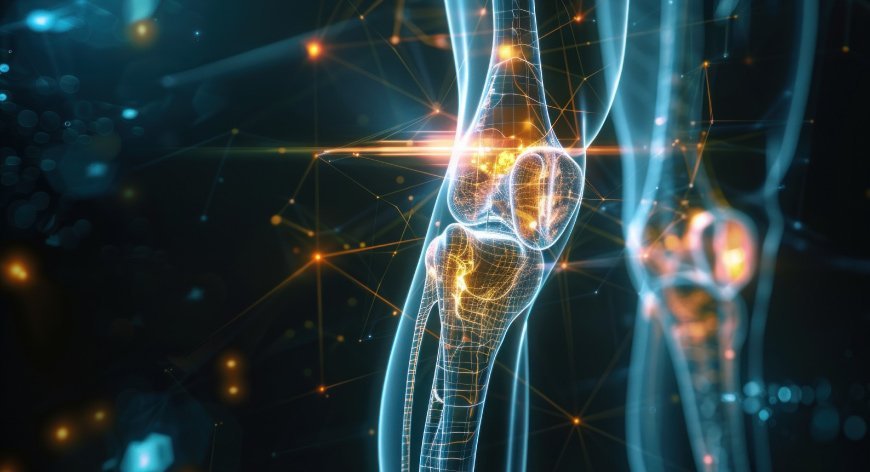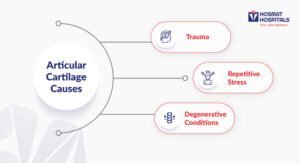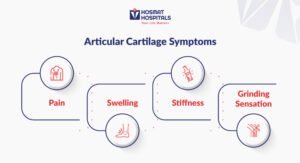
Articular cartilage is a smooth, white tissue covering the ends of bones, which come together to form joints. This cartilage allows soft movement and cushions between bones, absorbing shock and reducing friction. In severe cases, however, damage to this vital tissue can result in pain, swelling, and reduced mobility. Articular cartilage repair is a medical procedure to restore the function and integrity of damaged cartilage, helping patients regain their quality of life.
Understanding Articular Cartilage Damage
Various factors, including trauma, repetitive stress, and degenerative diseases like osteoarthritis, can damage the articular cartilage. Unlike other tissues in the body, articular cartilage has a limited capacity for self-repair due to its avascular nature, meaning it lacks blood vessels. Consequently, once damaged, it rarely heals independently, necessitating medical intervention.
Causes of Articular Cartilage Damage
- Trauma: Sports injuries, accidents, or falls can cause acute damage to the cartilage.
- Repetitive Stress: Continuous, high-impact activities or occupational hazards can lead to wear and tear over time.
- Degenerative Conditions: Diseases like osteoarthritis progressively deteriorate the cartilage, leading to chronic pain and disability.
Symptoms of Articular Cartilage Damage
Patients with damaged articular cartilage may experience:
- Pain: Persistent pain in the joint, especially during movement.
- Swelling: Swelling of the joint surrounding an injury.
- Stiffness: Joints are less flexible and harder to move.
- Grinding Sensation: A feeling of grating or catching when moving the joint.
Articular Cartilage Repair Treatments
To restore and repair damaged articular cartilage, several advanced techniques are used. By performing these procedures, good cartilage is transplanted into areas that need it or new cartilage is stimulated to grow there.
Non-Surgical Methods
In mild cases, rest, physical therapy to strengthen muscles and improve joint stability, and anti-inflammatory medications can manage pain and promote healing.
Surgical Methods
1. Microfracture
Microfracture is a surgical technique that involves creating small holes in the bone beneath the damaged cartilage. These holes stimulate the release of bone marrow cells, which can form new cartilage tissue. This method is particularly useful for small areas of damage.
2. Autologous Chondrocyte Implantation (ACI)
ACI involves harvesting healthy cartilage cells (chondrocytes) from the patient and culturing them in a laboratory. Once the cells multiply, they are re-implanted into the damaged area. This technique is suitable for larger cartilage defects and aims to regenerate durable, long-lasting cartilage.
3. Osteochondral Autograft Transplantation
In this procedure, healthy cartilage and underlying bone are taken from a non-weight-bearing area of the patient’s joint and transplanted to the damaged site. This method provides immediate structural support and helps integrate new cartilage into the joint.
4. Osteochondral Allograft Transplantation
Similar to autograft transplantation, this technique uses donor tissue to repair larger cartilage defects. The donor tissue is carefully matched to the patient to minimize the risk of rejection and ensure successful integration.
5. Matrix-Induced Autologous Chondrocyte Implantation (MACI)
MACI combines ACI with a collagen matrix that supports the growth and distribution of new cartilage cells. This scaffold is implanted into the damaged area, promoting uniform cartilage regeneration and enhancing the structural integrity of the repair.
Rehabilitation and Recovery
Successful articular cartilage repair requires a comprehensive rehabilitation program to ensure optimal recovery. Patients typically undergo a structured physical therapy regimen to restore joint function, improve strength, and enhance mobility. The rehabilitation process may include:
- Weight-Bearing Exercises: Gradually increase weight-bearing activities to strengthen the joint.
- Range of Motion Exercises: Activities designed to improve flexibility and prevent stiffness.
- Strength Training: Exercises to build muscle around the joint, providing better support and stability.
- Activity Modification: Educating patients on lifestyle changes to avoid repetitive stress and protect the repaired cartilage.
Conclusion
Articular cartilage repair is a vital medical procedure that can significantly improve the quality of life for individuals suffering from joint pain and reduced mobility. Advances in surgical techniques and rehabilitation protocols have made it possible to restore damaged cartilage effectively, allowing patients to return to their daily activities with reduced pain and enhanced function. If you are experiencing joint pain or suspect cartilage damage, consult HOSMAT Hospitals, the best Orthopedic Hospitals in Bangalore, to explore the best treatment options.



